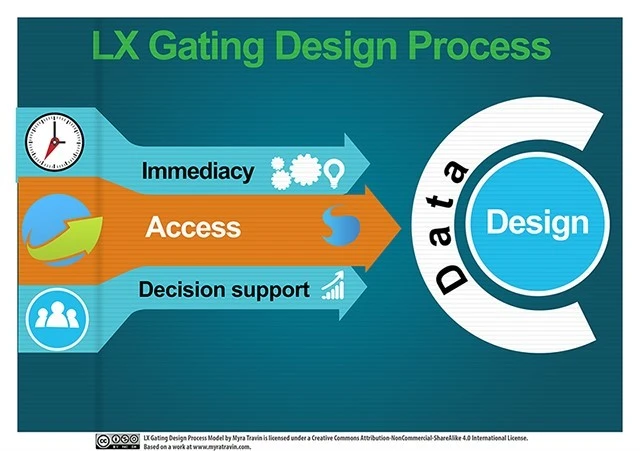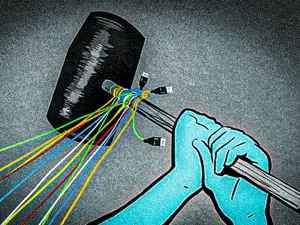“If it’s just the designer, then you might well have an evil implementation” — Chris Nodder
I know it might sound heretical, but I think LX design that seeks to influence learner behavior before understanding is … upside down. I have seen those who say they are gathering learner understanding, with research, personas, use cases, user journeys, concept practices, surveys, analysis, and testing, but when I see what they do to gather this information, I know they are doing very little profound learner evaluation and moving on quickly to development. Just sayin’—it feels a bit perfunctory to me. These strategies are always an attempt to define learner behavior, rather than letting learners define themselves. And, they are an attempt to define this behavior within the UX design model. People are not puzzles to be evaluated like the New York Times crossword and then finished; they are ongoing mysteries who reveal themselves. That is why I am suggesting the LX Gating Design Process – I want to make sure that all we have learned in Instructional Design is not lost in the UX process.
In the Stanford lab where behavioral design was born, the idea was seeded that comprehending human psychology would lead to influencing users within a design setting to make choices. These are choices that the designer would prefer that they make to meet the goals of the designer—frankly, within a time frame. Hey, you! Click here, click now. Thanks.
Most UX authors discuss persuasion as an inherently good thing, however invisible the approach is to the user. But as UX design guru Nodder suggests, it can be used for both good and evil, and most of the examples he sees are of the bad UX variety.
Technology that seeks to change behavior is antithetical to a learner interface. Learning should not be about influencing learners toward designer goals, even if that does meet the company or organizational directives. Or, relying on people’s preferences and emotional responses within a design that lead you to another set of conclusions about usability are often wrong.
Behavioral design is brilliant, no doubt. But I suggest that the model is upside down for learners. BJ Fogg, the father of BD, reminds us: “Technology is not a magical ingredient that changes people. It’s simply a channel for delivering an experience. And you must get the experience right.”
Let’s define what learners need in an experience—immediacy, access, decision support, and data. Interaction design that accurately sees the problem because it understands that people’s needs behind the problem lead to an accurate model/design for a learner’s world. The same rules do not apply to learners that apply to users. Learners are not a tabula rasa; their experiences are key to the creation of the design. You can say they are more important players in the design process than the LX designer. So if the concern is to identify behavior that needs to be changed, I say start before that process by inserting the word “understand” for the word “change.” Learners are on their own personal, algorithmic journey, and they will confound a designer’s need to design for simplicity and behavioral change. Simply put: you don’t change learners, they change themselves.
You have a chicken. You have an egg. Trust me, start with the egg first. Let the design reveal itself to you, not by user preference, emotional responses, and persuasive techniques. Those can come later when you actually begin the design based on the learners’ data signatures. You can know the chicken is there, but start with the egg. Don’t try to persuade behavior change until you fully understand it. Then, it may just persuade you.
Here is a model for my new LX Gating Design Process that outlines the key learner factors to consider. It utilizes clear data analysis of learner behavior prior to the first step in a re-envisioned LX design process. It’s not learner-centered lip service, but a foundation essential to constructing an effective environment.

Next week, I will do a second part to this series called “The 3 Factors of Pre-Evaluation Data Design Meets Learners Where They Are.” Learn more at m_travin.





